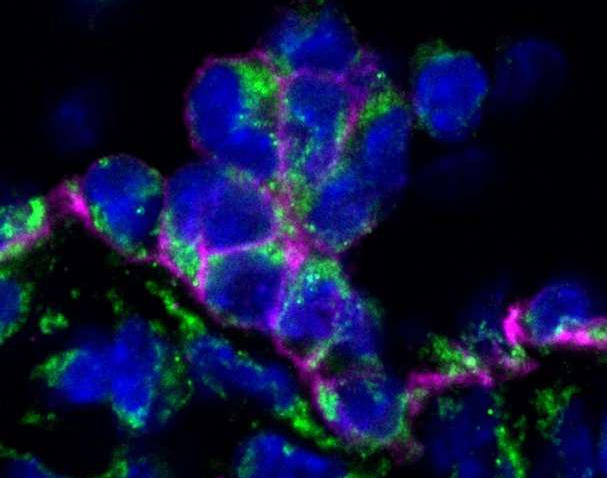造血干细胞研究或助力新型抗癌疗法的开发

近日,一项刊登于国际杂志Nature Communications上的研究论文中,来自爱丁堡大学的研究人员的最新研究成果或可帮助改善白血病患者的生存情况,该研究揭示了机体如何进行自身的血液供给。
如今科学家们距离创建造血干细胞又更近了一步,这将帮助减少癌症或血液障碍患者对骨髓移植的需求,而科学家们成功从多能干细胞人工培养出干细胞或可帮助进行个体化疗法的开发。造血干细胞位于骨髓中,其可以产生机体所需要的所有血细胞,这些名为造血干细胞(HSCs)的干细胞可以帮助恢复白血病患者机体的血液供给。
本文研究中研究人员利用小鼠模型进行研究,清晰地揭示了子宫中造血干细胞产生以及发育的过程及机制,而且本文研究中研究者也首次揭示了三种关键分子如何相互作用来产生新型细胞,这些细胞随后就会在成人机体骨髓中被发现。
本文研究或将帮助科学家们在实验室中重现造血干细胞的培养过程,而且造血干细胞有望在未来某一天被在临床中使用;这项基础性研究也对其它疾病的研究产生了一定影响,比如影响血液形成和血液供给的多种疾病等。
Inductive interactions mediated by interplay of asymmetric signalling underlie development of adult haematopoietic stem cells
Céline Souilhol, Christèle Gonneau, Javier G. Lendinez, Antoniana Batsivari, Stanislav Rybtsov, Heather Wilson, Lucia Morgado-Palacin, David Hills, Samir Taoudi, Jennifer Antonchuk, Suling Zhao & Alexander Medvinsky
During embryonic development, adult haematopoietic stem cells (HSCs) emerge preferentially in the ventral domain of the aorta in the aorta–gonad–mesonephros (AGM) region. Several signalling pathways such as Notch, Wnt, Shh and RA are implicated in this process, yet how these interact to regulate the emergence of HSCs has not previously been described in mammals. Using a combination of ex vivo and in vivo approaches, we report here that stage-specific reciprocal dorso–ventral inductive interactions and lateral input from the urogenital ridges are required to drive HSC development in the aorta. Our study strongly suggests that these inductive interactions in the AGM region are mediated by the interplay between spatially polarized signalling pathways. Specifically, Shh produced in the dorsal region of the AGM, stem cell factor in the ventral and lateral regions, and BMP inhibitory signals in the ventral tissue are integral parts of the regulatory system involved in the development of HSCs.

